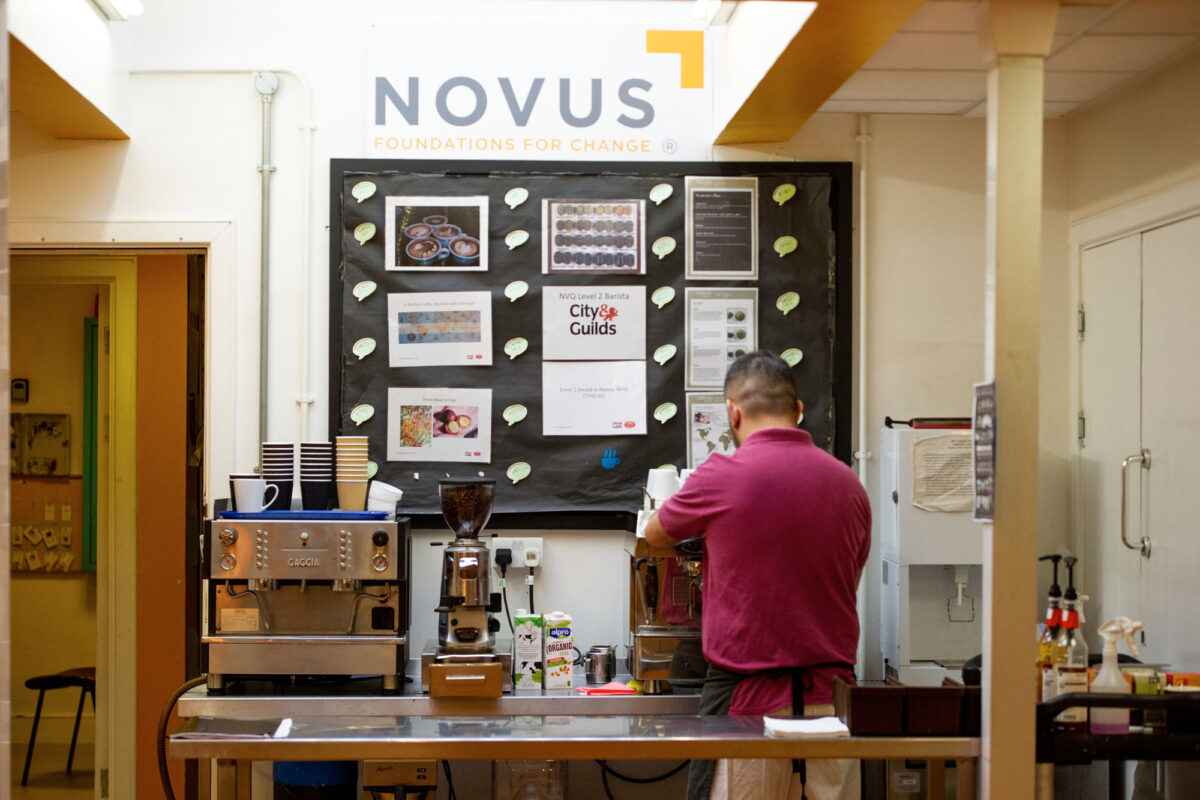Gradual, then sudden: why employment has stalled and what the Budget should do

Ahead of next week’s Budget, Tony Wilson details an action plan for government to tackle the underlying causes of economic inactivity – to help those who want to work to get back in, help people stay in work, and to make work better.
Hemingway wrote that bankruptcy happens in two ways: “Gradually, then suddenly.” Changes in the labour market can be like that too – with trends taking months or years to develop, before seeming urgent, immediate and often (with perfect hindsight) entirely predictable. In many ways Covid-19 put paid to that, with two million new claims to Universal Credit in a month, then nine million jobs furloughed, then record levels of redundancies followed by record vacancies – all sudden changes in quick succession. But now with the government due to publish its ‘participation review’ next week setting out plans to raise employment, it feels like we’re back in familiar territory: trying to understand and respond to issues that have been with us for decades, then got worse, and which now feel immediate and urgent.
The government is right that raising participation should be a top priority – we have half a million more people out of work than before the pandemic, over a million unfilled jobs, a costs of living crisis, and the Bank of England citing the tight labour market as a key risk for inflation and interest rates. So what is going on, and what should government do? A lot of ink has been spilt on this already (including by us) but most of this has focused on the ‘sudden’ changes during the pandemic rather than the more ‘gradual’ ones that they have often exposed and exacerbated. So here’s my take on five big challenges that we need to address, and four things that we can do.
For the first time in thirty years, our labour market has stopped growing
First, most importantly, three decades of labour market growth appears to have stopped. We first highlighted this eighteen months ago (the so-called ‘missing million’), but the gap has remained stubbornly wide since then even as vacancies continued to rise.
In part, this gap has emerged because of large rises in economic inactivity with the pandemic. However there are longer-term reasons too. In particular, since the 2016 EU referendum we have seen a significant slowdown in the growth of non-UK born workers, from annual growth of around 220 thousand between 2006 and 2016 to around 140 thousand a year since then (a cumulative difference of about half a million over seven years). Alongside this, we’ve seen a sustained fall in the number of young people in the labour force – from 3.7 million a decade ago to 3.1 million now. This has largely been due to demographics (there aren’t as many young people as there were) but also due to higher participation in education. And looking ahead, a broadly flat birth rate and no more freedom of movement means we will need to do far better at helping people to get into work, to stay in work longer, and to be more productive in work.
We’re getting older, but not always working longer
Pre-pandemic, these falls in the number of young or non-UK born people in the labour force were largely disguised by rises in employment among older people – helped along by rising State Pension Ages (especially for women). However, the pandemic saw both more older people than usual leave the labour force and fewer older people return to it, driving most of the growth in economic inactivity. Many of those who left have retired and appear to be relatively financially secure and unlikely to return to work; but it also looks like this has been a one-time thing – with the total number of people who say that they are ‘early retired’ now back to pre-pandemic levels and the employment rate for older people starting to edge up again.
The bigger issue though is that we’re also unlikely to see a return to the sort of growth in employment among over-50s that we had pre-pandemic; while our ageing population means that all else being equal, economic inactivity will continue to rise. So we need to do far better on helping older people to get back into work, but also to stay in work longer. This is undoubtedly an opportunity as well as a challenge, but it’s one that the UK has been pretty poor at meeting in the past – with our Commission on the Future of Employment Support finding that despite the UK having among the highest employment rates in the developed world pre-pandemic, we were firmly mid-table on employment of older people.
Too many people are disadvantaged in the labour market, especially due to poor health
Perhaps the most reported-on change since the pandemic has been the significant growth in the number of people out of work due to long-term health conditions, which has risen by half a million over the last five years, to its highest ever level. This is affecting men and women, and younger people as well as older – in fact poor health is a stronger predictor of being out of work among people under 50 than those who are older. And it appears to be mainly due to people who have been out of work since before the pandemic spending longer out of work (indeed most of those who are economically inactive have been out of work for at least four years), but ‘Long Covid’ has likely also led to tens of thousands of people leaving the labour force.
We set out in our Commission launch report how having a long-term health condition is just one of many ways in which people can be disadvantaged in the labour market, with in particular disabled people being two-and-a-half times more likely to be out of work than non-disabled people, those with low qualifications about twice as likely, and significant gaps for those living in deprived areas, most ethnic minority groups, lone parents and young people not in education. Many of these employment ‘gaps’ have got worse since the pandemic, but they were all far too wide before the pandemic began (and again, far wider than in many other developed economies).
The ‘costs of living crisis’ is becoming a costs of working crisis for some of us
More recently, we think that we are also starting to see signs that rising living costs are making it harder for some people to come back into work. This feels counter-intuitive – higher prices (alongside strong wage growth) is likely one reason why fewer people are now moving into economic inactivity and so many people are changing jobs. However time and again in our own research (so far unpublished, but listening to hundreds of people delivering frontline services or out of work) we hear that people are caught in a trap – between real hardship out of work and a fear of being worse off in it, because they can’t afford the transport or equipment, can’t get childcare, or are worried about the effect on their Universal Credit (or other entitlements). As a result, where people are looking for work they are looking for work that is more local, more part-time and can be more flexible.
High-skilled work is growing, but the benefits aren’t being felt equally
Set against this pretty grim picture, the last few years has nonetheless seen continued growth in employment in higher skilled work and falls in lower skilled. Half of all employment now is in professional and senior managerial jobs, compared with a little over two fifths (43 per cent) a decade ago. This accelerated since 2019, with strong growth in technology jobs, business services and finance, as well as health and public service professions. At the same time, lower skilled jobs now account for just over a fifth (22 per cent) of all employment compared with a quarter (26 per cent) a decade ago – particularly due to fewer jobs in retail and hospitality. These are likely to be permanent changes – with firms continuing to report that skills shortages are more important than labour shortages, and that these shortages are most acute for degree-level skills and higher.
Nonetheless, the recent Census data reminds us that these opportunities are not spread equally: one third of all high skilled employment is in London and the South East, while low skilled work is concentrated in more disadvantaged areas that often also have more people out of work. Indeed in about a dozen areas, there is still more low skilled than high skilled employment (Hull, Stoke, Leicester, Blaenau Gwent and Great Yarmouth among others).
What can we do – at the Budget and beyond?
These issues all feel sudden, but in reality almost all are gradual changes that have been made immediate and urgent because of the disruption brought by the pandemic. Too often in the past, the focus has been on the sudden change (like the ‘Way to Work’ campaign a year ago); so next week we need a plan to address the underlying causes – to help those who want to work to get back in, help people stay in work, and to make work better. Here’s four things that government could do.
Offer to help people
Most importantly, we need to significantly expand access to employment support. This needs to be an open, non-conditional offer for all of those who are disadvantaged in the labour market and who want to work. Government could move quickly by extending eligibility to the Restart Scheme (which would also help to recover some of the sunk costs lost when contracts were revised last year and/ or the smaller Work and Health Programme (which was extended to good effect during the pandemic). It also needs to do more to bridge the gap between the European Social Fund and Shared Prosperity Fund (SPF), ideally by bringing forward SPF funding to this year.
Ideally though, we would go further than this and commission new and more specialist support aimed specifically at helping those who are most disadvantaged in the labour market. This would take longer to put in place – likely at least a year – but would mean we could co-design and commission the sort of person-centred, trusted, joined-up and employer-responsive support that in the long run we need (this paper (pdf) by Anne Green and Abigail Taylor is I think the best recent summary of what works).
Work together
Secondly, we need far more of a focus on raising participation and supporting good work across public policy and services. Partly this is about accountability, funding and leadership – the Local Government Association’s ‘Work Local’ proposals set this out well, calling for a national Work Local Board and then greater devolution to support better co-ordination, accountability and outcomes. Northern Ireland, through its Local Labour Market Partnerships, is taking a similar approach.
However, it’s also about ensuring that we are improving access to employment support through the services that people already use and trust, and that are often best placed to either deliver or refer on to support. Health services are the best example – where the Budget can do far more to improve access to occupational health and rehabilitation and specialist employment support. I would also make a particular plea for working with social landlords: more than a quarter of those outside of the labour force live in social housing, and many social landlords are active in providing employment support for their residents and local communities. We set out this case with Learning and Work Institute a few months ago, alongside some ideas on what we could do – including trialling the well-evidenced ‘Jobs-Plus’ model.
Reduce the costs of working
Next week is also an opportunity to reduce the costs of moving into work for those on low incomes. Top of the list should be to reintroduce something like the ‘In Work Credit’ and ‘Return to Work Credit’, which paid £60 a week (in today’s money) for up to a year for people returning to work from Income Support and incapacity benefits. These were abolished in 2011, but independent evaluation suggested were effective in increasing returns to work. These would both be far better targeted and more immediate than providing a general tax break (especially given many of those returning to work would be pay little or no income tax anyway).
Alongside this we also need action on addressing specific costs like childcare and transport – in particular on childcare, Gingerbread set out clear recommendations last month including extending access to free childcare, introducing a non-repayable grant for the first few months, reviewing payment limits in UC, and putting in place an infrastructure fund to stabilise the market.
Talk to employers: more support, but expect more too
Finally, the participation review must include a clear action plan for how we can better work with and support employers, and expect more from them too. This should include a single, joined-up offer to employers on filling their jobs (rather than the fragmented approach that we have now across programmes and services); more investment in the local networks and partnerships that can support employers on recruitment, job design and flexibility (along the lines of the good practices that we found in recent work with the LGA; and enabling more flexibility in funding for workplace skills support. Alongside this, the government should also reintroduce its delayed Employment Bill – so this is underpinned by stronger standards on security at work, a
presumption of flexible working, and a single enforcement body that can also help raise standards and improve practice.
Next week’s Budget is unlikely to do all of these things, but I’m optimistic that we will see at least some of this – and likely more than we’ve seen in the last few (it feels like many) budgets and fiscal events. I’m optimistic too because I think we’ve a great opportunity here and in the next few years, to do better by the 1.7 million people who are economically inactive but would like to work right now, and the 1.4 million more who don’t want a job now but expect to work in the future. So if next week doesn’t do it all, then let it be a start – of the sort of lasting change that we need to see in our approach to the labour market, employment and support.











Responses